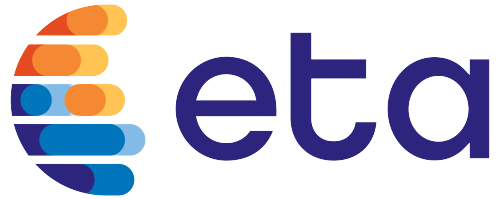You have started your business and intend to provide goods and/or services on a regular basis, possibly on a fixed schedule. You get customers to sign up to participate for a certain period of time, for a certain fee, etc. In other words, the customers “subscribe” to your products/services in a subscription business model.
All that you need now is a merchant account so your company can get paid. You go to your local bank and try to open a merchant account, but, unfortunately, your request is denied. You find out that your very legal and very ethical subscription-type business is “high risk.” So, are subscription merchant accounts considered high risk? If so, why?
The short answer to the first question is “Yes.” Banks and other financial institutions usually view subscription-type operation as a high-risk business. Let’s take a look at why.
What is a Subscription Model?
First, what are we talking about specifically when we say “subscription model”? Subscription-type businesses have been around in one form or another for a long time. Many of those forms seem very ordinary. For example, during most of the past century, receiving daily delivery of a newspaper was pretty much an expected part of everyday American life. The delivery boy didn’t collect payment each day, but would instead come around once a month to get the monthly payment for your subscription.
Another common subscription-type service that was popular for many years is daily delivery of milk. Millions of Americans were visited in the early morning by the “milkman,” who would place a bottle of milk on their doorstep or in a special box and collect the empty bottles from the previous day’s delivery. Often, it was the dairy farmer himself who would make the delivery.
What is Different about Subscription Business Models Today?
At their core, subscription business models today are basically the same as they were in the days of early-morning milk delivery and paperboys throwing your newspaper into the bushes, onto the roof, and if you were lucky, occasionally onto your porch. The merchant provides the customer with certain goods and/or services at a set frequency (daily, weekly, monthly, when needed/requested by the customer, etc.,) for a certain period of time for a fee that covers that period of time. The merchant bills the customer based on the set frequency, rather than each time the goods/services are provided.
The main thing that has changed is the use of increasingly sophisticated technology at all stages of the process, particularly in billing, payment, and management of delivery. One result of this is that more of the process has become automatic, and that means that the customer is less directly involved in it. If payments are made automatically or infrequently, or a lot of time passes between deliveries, customers may even be unaware (or forget) that they have subscribed.
That isn’t likely to happen if you have a paperboy throwing a newspaper into your bushes each day and pounding on your door once a month demanding payment.
What Makes a Subscription Business High Risk?
There are a variety of reasons that banks and other financial institutions consider certain businesses and industries to be high risk. One of the most common is having a high chargeback rate . Chargebacks cost time and money for you and for a bank providing you with a merchant account, so traditional banks and popular payment processors tend to have strict criteria for how high the chargeback rate can be.
A high chargeback rate is often the factor that gets applications for subscription merchant accounts denied. Even if you manage to open a merchant account, going over the limit set by the bank could get your account closed, quickly and without warning. If that happens, you can no longer accept payments by credit card, etc., so if that his how your customers usually pay, your revenue stops. That’s the one thing that we definitely don ’t want to happen.
Subscriptions and Chargebacks
What is it about subscription-type businesses that results in a higher rate of chargebacks? At the foundation of the answer is the nature of subscriptions as a recurring business model. While a subscription for goods or services has many benefits, including convenience, of course, it also introduces certain risks.
The simple fact that goods/services are provided repeatedly and regularly increases the opportunities for a customer to be dissatisfied or have some other reason to demand a refund. That translates into an increase in the number of cases of customers actually initiating a chargeback.
As mentioned, the use credit cards and other cashless payment methods, as well as the adoption of increasingly sophisticated technology for billing, etc., have made the process more automatic. The customer is less directly involved in it. Being able to set payments to be made regularly for goods or services that are provided regularly is very convenient, but it also makes it easy to forget about the subscription, especially if delivery or billing are done infrequently.
A common scenario is that the customer subscribes to some service, forgets about it, and is surprised when a charge shows up on a monthly statement. Sometimes customers will panic and contact the bank directly to get the charge reversed instead of contacting the business. If they contact you to resolve the issue, it won’t be counted as a chargeback. It’s just a simple refund, etc. However, if they go directly to the bank and demand a refund, it ends up as a chargeback.
The Code of Federal Regulations defines a negative option plan as “a contractual plan or arrangement under which a seller periodically sends to subscribers an announcement which identifies merchandise (other than annual supplements to previously acquired merchandise) it proposes to send to subscribers to such plan, and the subscribers thereafter receive and are billed for the merchandise identified in each such announcement, unless by a date or within a time specified by the seller with respect to each such announcement the subscribers, in conformity with the provisions of such plan, instruct the seller not to send the identified merchandise.” ( Code of Federal Regulations Title 16, Chapter 1, Subchapter D, Part 425, Section425.1(c)(1) )
In more understandable language, it means that consumers get regular shipments (or services) at a set rate until they cancel the agreement. It is also called a “negative option continuity plan .”
The benefit of that type of plan is that the customer does not have to acknowledge or approve delivery on each occasion. They receive the products or services automatically. That’s also the drawback of that type of plan. The merchant keeps sending stuff until the customer tells the merchant to stop, and if automatic payment used, payment continues as well.
People in general tend to ignore the small print in agreements, and merchants sometimes neglect to make it clear that the customer is agreeing to a subscription, or what the specific terms of the agreement are. In both cases, the customer may initiate a chargeback.
Although the nature of subscriptions means that there is a higher risk of chargebacks, there are a variety of things that you can do to reduce your business’ chargeback rate and keep it at a minimum.
Newness of the Subscription Industry
As mentioned at the beginning, subscription-type businesses themselves have been around for a long time. Credit cards and other types of cashless payment and the sheer number of subscription-type businesses are what is new. The subscription industry is expanding and becoming more diverse, so the newness is likely to continue into the foreseeable future. That newness means that there are many unknowns for traditional banks, etc., which in turn means that they will be more reluctant to take on your business as a client.
What Can You Do for Your Subscription Merchant Account?
One thing that you absolutely must do is to get a solid understanding of the laws and regulations that apply to subscriptions, such as the rules of prenotification . Be sure to get appropriate legal advice from a competent attorney.
Another thing that you will likely need to do is to open a high-risk merchant account . Even aside from matters related to subscription business, a high-risk payment processor such as Zen Payments specializes in payment processing for high-risk industries like subscription merchant accounts, so it knows those industries better than a traditional banker would, and could be exactly what you need, not only to get a merchant account, but also to get your high-risk business operating smoothly and effectively.
When choosing a high-risk payment processor, be sure to ask as many questions as necessary until you’re satisfied with the responses and clear on what you can expect and what will be expected of you. Our team at Zen Payments would be happy to speak with you and find ways to help your business prosper, so please don’t hesitate to contact us .





